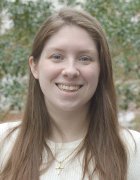
Sergej Khackimullin - Fotolia
SAP.iO gives startups a leg up with resources and investment
Goodr and Ruum are part of SAP.iO, a startup incubator that provides investment, as well as technical and business resources to bring innovative products to market. SAP gets something out of it, too.
SAP is removing obstacles that can get in the way of a startup going from idea to real business. The technology vendor is now providing resources for would-be entrepreneurs through a startup incubator called SAP.iO. The program, which launched in 2017, offers investment and resources -- technical and business -- for emerging startup companies.
Goodr, a startup that developed a food service app to help alleviate hunger and food waste in America, is part of the SAP.iO incubator. The Goodr app began as a simple idea, according to founder and CEO Jasmine Crowe, but the resources from SAP.iO helped bring the app to life.
Crowe learned from an investor that SAP.iO was looking for "women-led and diverse-led companies, and enterprise sustainability solutions." Goodr demonstrated its food service app at an SAP.iO demo day in New York earlier this year, and subsequently became part of the program.
Goodr gets technical and business advice
SAP.iO offered Goodr technical resources, but Crowe said the business expertise was important as well.
"I saw our value prop very clearly, but I felt I maybe wasn't communicating it, so SAP.iO put me in touch with a lot of mentors from their sales team who helped me understand the decision drivers of the decision-makers that we're selling to," Crowe said.
 Jasmine Crowe
Jasmine Crowe
Goodr consists of an app that connects food service sites, such as restaurants, to recipients, such as homeless shelters. The app includes a back-end portal to store, track and analyze data. The key to making it work is SAP Leonardo IoT and blockchain technology, which are used to provide safety and track food freshness.
"The biggest concern that people have is with the food safety and liability aspect," Crowe said. "With SAP Leonardo, we can use RFID tags in our packaging and send real-time information about the actual temperature of those items to the cloud. When someone donates excess food, they slap a tag on it and press 'Request Pickup,' and we can then track that tag with our driver."
Data about the donated food goes into an SAP ERP system. Managers can then use the Goodr portal to analyze and visualize the data. Food donations, for example, can be tracked by the specific amount donated and type of food.
"Typically you just donate food, but you don't track it; you don't know what you just donated," Crowe explained. "Food donators get a tax benefit equal to 50% of the food's value at the time it was donated, so they save money. But they're also improving their carbon footprint because for every pound of food we keep from going in a landfill, our platform dashboard tells them how many gallons of water they're saving and how much carbon dioxide or methane gas they're keeping out of the environment."
Creating a modern SAP application ecosystem
SAP.iO is an effort to create an ecosystem for SAP applications that reflects today's API-centered approach to development, according to Deepak Krishnamurthy, SAP chief strategy officer.
 Deepak Krishnamurthy
Deepak Krishnamurthy
"In the old world, on-premises ecosystem, the SAP ecosystem was largely systems integrators building on ABAP, and extending the application portfolio," Krishnamurthy said.
SAP.iO enables developers to build applications that combine data from SAP systems, like HANA, with next-generation technologies, including machine learning, IoT, AI, blockchain and advanced analytics, Krishnamurthy explained. Applications can be integrated and delivered though an API-based model.
"But now with the cloud, more of it will be not just extensions on the SAP Cloud Platform, there will be interesting innovations delivered through an API-based model with tight integration between SAP and startups using machine learning, IoT or other technologies, enabled by data from SAP."
Startups that get investment from the SAP.iO Fund are brought into what's called a "Foundry," where they are given SAP mentors who provide sales and marketing experience, as well as exposure to SAP customers. There are currently 125 to 150 startups in the SAP.iO portfolio, according to Krishnamurthy.
Best of both worlds for a startup
SAP.iO prospects have come from inside the SAP fold as well. Florian Frey is a 10-year SAP sales veteran who developed a workplace productivity application called Ruum with backing from SAP.iO. Frey now acts as co-founder and chief customer officer at Ruum, which operates as an independent company under an SAP umbrella.
 Florian Frey
Florian Frey
"When I worked in sales, I spent 80% of my time on internal alignment calls," Frey said. He wanted to build a technology that helped make better use of a sales agent's time.
In 2017, Ruum became one of the first ventures to be developed by SAP.iO, according to Frey.
"We submitted this business idea to fix the productivity problem in the enterprise. We went through this acceleration program and were lucky enough to secure investments," Frey said. "Then, as SAP employees, we were able to build a new product from scratch, while being funded and operated like a startup."
Ruum has a simple UX, but on the back end, it has integrations with SAP systems so team collaboration is embedded into business processes, Frey said. It also includes AI-based features like bots that automate routine project management tasks.
"We believe that it's a big problem that all these highly experienced, highly paid, and highly educated people out there spend their time sending each other reminder emails," he said. "So we built a bot that takes over all the check-in, follow-up, and reminder emails with your team. We can also take companies' workflows that are today spread across email and spreadsheets, and transform them into automated projects."
Ruum is a public cloud-based application that has three licensing models: a free version, a professional version that begins as a freemium license, and an enterprise version that has more integrations and functionality available for various licensing costs.
Developing the app as part of SAP.iO enabled Ruum to operate like a startup while utilizing SAP resources, according to Frey. The idea for internal development is to build and release products faster and then build a customer base.







